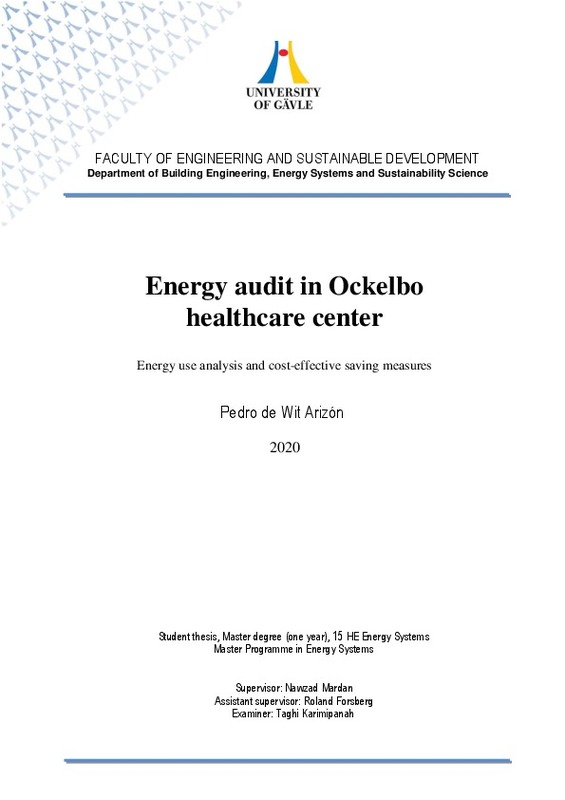JavaScript is disabled for your browser. Some features of this site may not work without it.
Buscar en RiuNet
Listar
Mi cuenta
Estadísticas
Ayuda RiuNet
Admin. UPV
Estudio y análisis del estado energético de Din Hälsocentral mediante una auditoría energética.
Mostrar el registro completo del ítem
Wit Arizón, PD. (2020). Estudio y análisis del estado energético de Din Hälsocentral mediante una auditoría energética. Universitat Politècnica de València. http://hdl.handle.net/10251/156537
Por favor, use este identificador para citar o enlazar este ítem: http://hdl.handle.net/10251/156537
Ficheros en el ítem
Metadatos del ítem
| Título: | Estudio y análisis del estado energético de Din Hälsocentral mediante una auditoría energética. | |||
| Autor: | Wit Arizón, Pedro de | |||
| Director(es): | ||||
| Entidad UPV: |
|
|||
| Fecha acto/lectura: |
|
|||
| Resumen: |
[ES] El trabajo trata sobre una auditoría energética realizada en un centro de salud en Ockelbo, un pequeño pueblo situado al este de Suecia, el la región de Gävleborg. En ella se realiza un balance energético de las ...[+]
[EN] As the world is becoming aware of the impact of global warming reducing greenhouse gases
emissions presents itself as a fundamental issue in order to avoid the environmental collapse
and its negative consequences. ...[+]
|
|||
| Palabras clave: |
|
|||
| Derechos de uso: | Reconocimiento (by) | |||
| Editorial: |
|
|||
| Titulación: |
|
|||
| Tipo: |
|
recommendations
Este ítem aparece en la(s) siguiente(s) colección(ones)
-
ETSII - Trabajos académicos [10404]
Escuela Técnica Superior de Ingenieros Industriales







